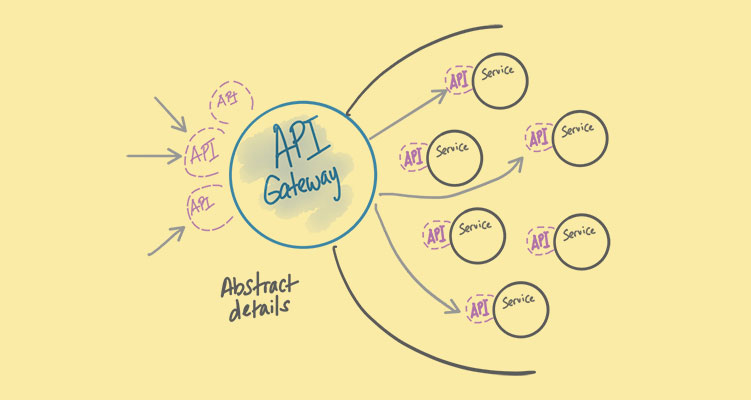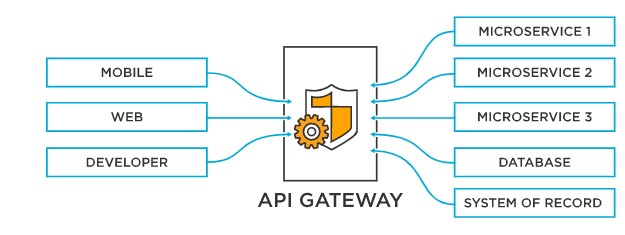
IT industry is going through a major transformation for which most of the monolithic applications are redesigned and redeveloped with new design patterns like Microservices. You might be directly or indirectly part of this transformation journey and might heard very frequently about terms like API Gateway and Service Mesh. In this post, we will discuss in detail API Gateway and Service Mesh, Why we need API Gateway, Rest API Service Mesh, What is Istio, API Gateway VS Service Mesh, the difference between API Gateway VS Service mesh and example of API Gateway and service mesh. we will discuss this in detail.
API Gateway:
An API Gateway is a server that is a single entry point into the system. The API Gateway will often handle a request by invoking multiple microservices and aggregation results. It can translate between web protocols such as HTTP and WebSocket and Web-protocols that are used internally. API is known as Application Programming Interfaces the common software interface that helps two different applications to communicate. In the modern world, most APIs are designed and developed using REST principles. The most modern applications heavily using microservices patterns that is a variant of the service-oriented architecture style using fine-grained, lightweight, loosely coupled services. These loosely coupled services need to communicate with each other and other applications; using secure, scalable architecture to support ever-increasing API traffic.
An API Gateway is the server that is the single-entry point for all the clients into the system. The API Gateway encapsulates the internal system architecture and provides an API that is customized to each client. It might have other responsibilities such as proxy, authentication, monitoring, load balancing, caching, request shaping and management, and static response handling.
The API Gateway’s job is to protect the critical API traffic that’s helping enterprises to increase revenue, improve developer productivity, reduce downtime, and slow performance. Like a load balancer API Gateway sends the request in this case API calls to specific locations based on client requests. An API Gateway enables you to maintain a single API domain with multiple versions depending on the user.
Why should we use API Gateway:
An API Gateway provides a single, unified API entry across one or more internal APIs. They typically layer rate limiting and security as well. An API Gateway can help us to provide a unified entry point for external consumers, independent of the number. API Gateway is an API management tool that sits between a client and collections of backend services. An API Gateway acts as a reverse proxy to accept all application programming interface calls. Most enterprise APIs are deployed via API gateways. It’s common for API gateways to handle common tasks that are used across a system of API services, such as user authentication, rate limiting, and statistics.
An E-Commerce site might use an API Gateway to provide clients with an endpoint for retrieving all product details with a single request. It invokes various services, like product information, and combines the results.
What is rest API Gateway?
A REST API in API Gateway is a collection of resources and methods that are integrated with backend HTTP endpoints, Lambda functions, or other cloud-based services. You can use API Gateway features to help you with all aspects of the API lifecycle, from creation through monitoring your production APIs.
Netflix is one of the examples of API Gateway. The Netflix services are available on different and various kinds of devices such as televisions, set-up boxes, smartphones, etc. It attempts to provide a size fits all API for its streaming services. That is possible with the API gateway Netflix usages various API gateways to support its ecosystems like Zuul or Edge Server.
Services Mesh:
In software architecture. A service mesh is a dedicated infrastructure layer for facilitating service-to-service communication between service or microservices using the proxy. A service mesh is a configuration infrastructure layer for a microservices application. It provides microservices governances by adding necessary visibility and security control when you have a lot of services the service mesh helps to discover, authorize and track the different services.
A service mesh is a platform layer on top of the infrastructure layer that enables management and communication between individual services. This platform layer enables complainers or individuals to create robust enterprise applications, made up of many microservices on a chosen infrastructure.
The service mesh is usually implemented by providing a proxy instance, called a sidecar, for each service instance. Sidecars handle interservice communications, monitoring, and security‑related concerns – in fact, anything that can be abstracted away from the individual services. Its advocates 12 factor Apps – the externalization of configuration to the environment.
One way to implement a service mesh is with SIDECAR. Sidecars handle inter-service communication with features such as Services Discover, Load Balancing, Encryption, Authentication and Authorization, Monitoring, and security.
In Service mesh NGINX can serve as
- Sidecar proxy
- Ingress Controller and both
While providing complementary features
- Load Balancer
- API Gateway
- WAF (Web-application firewall)
A service mesh is an open-source project. It is a way to control different parts of an application share data with one another. Unlike other systems for managing this communication, a service mesh is a dedicated infrastructure layer built right into an app.
What is Istio?
Istio is an open-source service mesh—a modernized service networking layer that provides a transparent and language-independent way to flexibly and easily automate application network functions. Istio is a configurable, service-mesh layer that connects, monitors, and secures the containers. It is a popular solution for managing the different microservices that make up a cloud-native application. Istio service mesh supports how these microservices communicate with each other.
Istio service mesh benefits:
- Consistent Service Networking
- Secure services
- Improve application performance
Example – Google Cloud Platform – Anthos Service Mesh
Difference between API Gateway VS Service mesh
| API Gateway | Service mesh |
| An API Gateway operates at the application layer at high level | A service mesh operates at the infrastructure layer at low level |
| An API Gateway focuses on business logic | A service mesh focuses on service-to-service communication |
| An API stands between external & internal apps | A service mesh stands between internal services for internal use only |
| An API Gateway enables transformation of request & responses | A service mesh simply relays communication as is |
| An API Gateway can work with monolithic & micro-services applications | A service mesh is for microservices applications only |
| An API Gateway is a more established technology | Service mesh is a new and nascent technology |
| There are many vendors for API Gateway | Service mesh is open-source initiative |
| API Gateway is easier to getting started | Service mesh involves a learning curve |
Example of API Gateway:
- Apigee
- Amazon API Gateway
- MuleSoft
- Kong
- Tyk.io
Example of Service mesh:
- LINKERD
- Kuma
- Consul
- Istio


 Workshop on Certified DevOps Foundation
Workshop on Certified DevOps Foundation Workshop on Certified DevOps Professional
Workshop on Certified DevOps Professional Get DevOps Certified
Get DevOps Certified